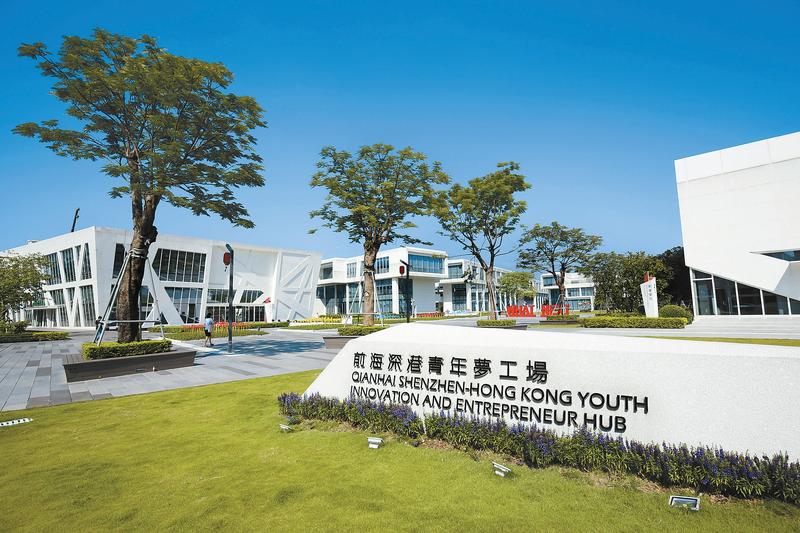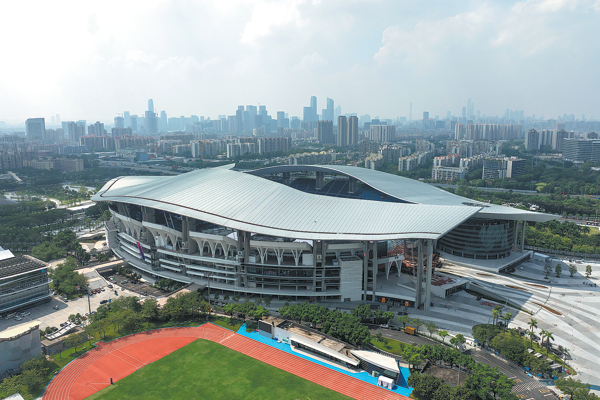A business role model for the world

Qianhai's expansion and new development plan open up more markets for Hong Kong's professional services industry. Zeng Xinlan and Chai Hua report.

With Shenzhen's expansive Qianhai economic zone emerging as a leading paradigm of technology, finance and innovation, experts say various professional services in Hong Kong will embrace a rapidly growing demand.
To further integrate the expertise and opportunities of professionals and entrepreneurs from both Hong Kong and Shenzhen, aided by the newly unveiled Qianhai plan, dismantling the hurdles in recognizing professional qualifications to ensure a free flow of workers and goods is of paramount importance, they said.
Qianhai's outlook should be examined from a higher perspective, backed by supporting policies, the huge market in the Guangdong-Hong Kong-Macao Greater Bay Area and an urban development approach that is integrated with technology, said Ivan Fu Chin-shing, director and architect at Hong Kong-based architectural and design company LWK + Partners.

"Qianhai has opened up a sea of possibilities. It could become not just a regional, but an international city cluster paradigm. It's very likely to be able to export not only facilities and technologies, but also a reputation, an image," he said.
The latest Qianhai plan, announced by the central authorities last month, proposes increasing the area of the Qianhai Shenzhen-Hong Kong Modern Service Industry Cooperation Zone from 14.92 square kilometers to 120.56 sq km. Focusing on the modern service and technology sectors, the plan envisages Qianhai turning into a world-class business environment by 2035.
Boost cooperation
The zone will boost its coordinated links with Hong Kong and Macao, and strengthen market interaction, industrial synergy and innovation support for the two special administrative regions that are part of the 11-city cluster with a population of about 86 million.
"It's not just about expanding its size. It's about the possibilities because it's intertwined with the blueprint of the Greater Bay Area," Fu said. The new Qianhai plan is timely after disruptions, including the social unrest in Hong Kong in 2019 and the COVID-19 pandemic, both of which have weighed heavily on the city's economy, he added.
The eightfold increase in Qianhai's urbanized area will draw in the Convention and Exhibition New Town, Shenzhen New Marine City, the area around Shenzhen Baoan International Airport and Baoan's central business district, as well as Dachan Bay to the north and the Shekou and Nanshan areas to the south.

The expansion will significantly enlarge the scope for professional-services employees, providing an upgraded playing field with more diversified pathways and openings, said Joe Fang Zhou, research director of the One Country Two Systems Research Institute.
"In the past, Qianhai's functions have been relatively narrow, featuring just the central business district. After the expansion with different functional areas, it could provide a broader and more diversified platform for various sectors of professional services in Hong Kong with a larger user base," he said.
"An area of 120 sq km amounts to 40 percent of Hong Kong's urbanized area. The Qianhai plan came as a surprise. It means we'll have more work to do. I'm more than thrilled," said Fu, adding that it can generate at least 40 percent more jobs in the architectural sector alone.
At the forefront of Shenzhen-Hong Kong economic cooperation and drawing on the merits of both cities, Qianhai bridges the gap between the SAR's rich professional services and the Chinese mainland's robust business domain, said Witman Hung Wai-man, the Shenzhen Qianhai Authority's principal liaison officer for Hong Kong.
Workers in professional services, such as law and auditing, financial services and technology, as well as entrepreneurs, are likely to carve out a niche for themselves under the blueprint, he said.
Rebecca Wong, PwC China tax and business advisory partner, said the modern service industry is still one of the core pillar industries under the new Qianhai plan, and it aligns with Hong Kong's advantages in the modern and professional service areas.
But the plan's speed of development will be much faster and can attract Hong Kong companies at a faster pace. The reason is the zone has set up a relatively mature foundation, and the new areas involved have their own established industries, such as the convention and exhibition industry, high-tech research and development in various areas, information technology and professional services.
In comparison, the initial Qianhai development plan was built on uncultivated land, and it took time to accumulate potential customers for modern service providers, Wong said.

The Shenzhen-based consultant said she has been receiving a growing number of inquiries from Hong Kong and mainland clients about Qianhai's business prospects and opportunities.
A global human resources consulting firm intends to open an office in Qianhai as it foresees the huge demand in the zone for international high-end professionals and human resources management, she said.
Preferential policies, the talent pool and the strength of local industrial chains are the chief concerns of companies making inquiries, and will play a key role in their decisions to choose new business venues, including Guangdong's free trade zones and Hainan Free Trade Port.
Qianhai's commitment to create a top-notch business environment and foster market interconnectivity with Hong Kong and Macao will lift its attractiveness to global investors and strengthen its competitiveness, Hung said.
Eradicate barriers
"We don't necessarily need to rely on providing subsidies to attract talents and companies. We should focus on making it more convenient for them to work or do business there rather than luring them with money," he said.
He called for the further easing of requirements for recognizing professional qualifications and the eradication of barriers for Hong Kong professionals working in Qianhai and other parts of the mainland.

"Now that we have the central government's backing, we need to focus on the details relating to the different systems and business practices in Hong Kong and on the mainland. Only then can we give full play to the roles of Qianhai and Hong Kong," Hung said.
Wong proposed that the Qianhai administration enforce more measures to link mainland and international standards and qualifications in modern service industries.
The financial sector also needs greater attention, especially to green finance, she added. "With the opening of the cross-border Wealth Management Connect and more diversified yuan-denominated bonds in Hong Kong, Qianhai should consider providing industry players with more innovative cross-border financial solutions and new service opportunities."



































